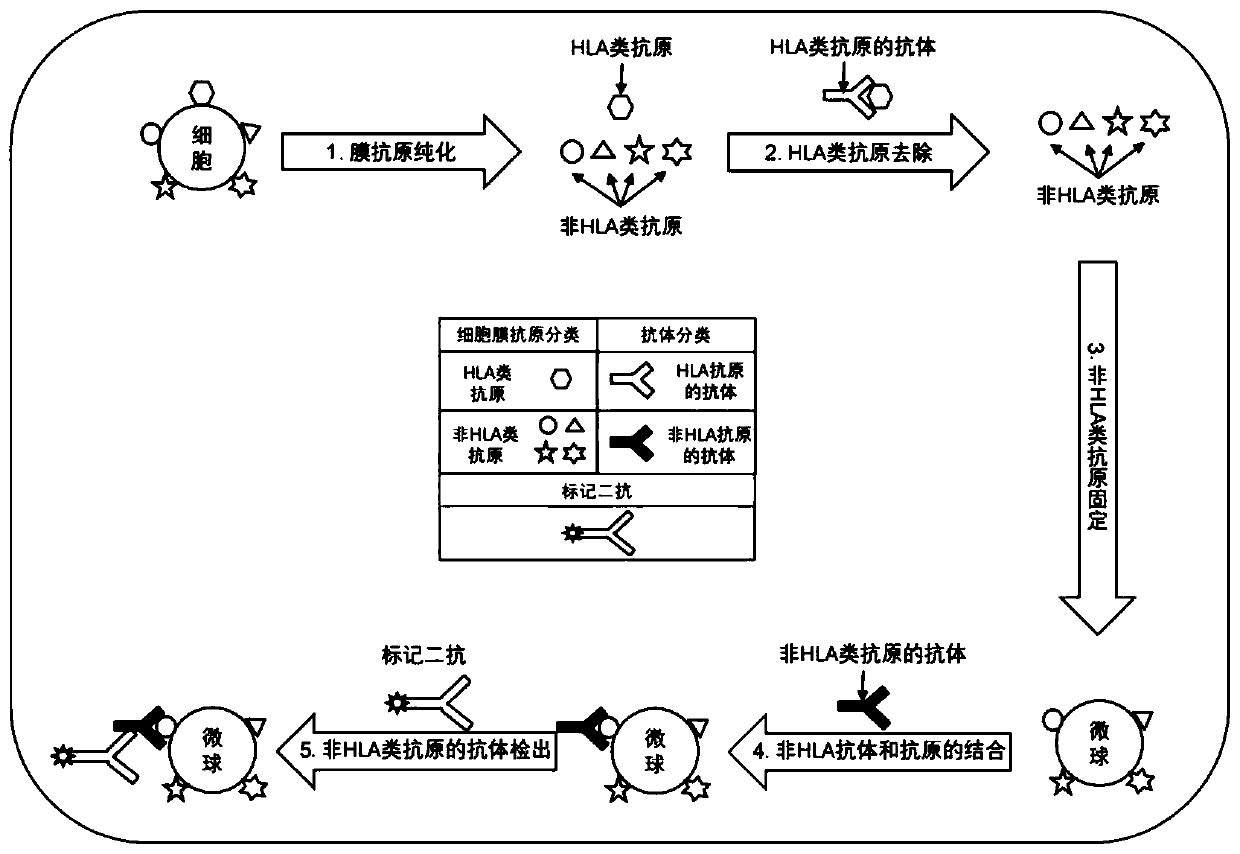Method for detecting allogeneic or donor-specific non-HLA antibodies
An allogeneic and specific technology, applied in chemical instruments and methods, anti-receptor/cell surface antigen/cell surface determinant immunoglobulin, specific peptides, etc. question
- Summary
- Abstract
- Description
- Claims
- Application Information
AI Technical Summary
Problems solved by technology
Method used
Image
Examples
Embodiment
[0028] Such as figure 1 As shown, the detection process of this embodiment mainly includes the following steps:
[0029] 1. Membrane antigen purification: organs, tissues, and cells derived from transplant donors or potential donors, such as vascular endothelial cells, blood cells or their components, cell components of graft tissue, or isolated, cultured, and expanded in vitro The increased cells are used as raw materials for membrane antigen purification, and all cell membrane surface protein antigens are extracted, including HLA antigens, known and unknown non-HLA antigens.
[0030] 2. HLA antigen removal:
[0031] a) Among the combined antigens extracted from raw materials containing both HLA and non-HLA antigens, according to the principle of antigen-antibody interaction, use HLA antibodies, antibody fragments, or combinations of antibodies or antibody fragments to adsorb and remove purified cell membrane combinations Among the antigens, HLA, the antigen that has not be...
PUM
 Login to View More
Login to View More Abstract
Description
Claims
Application Information
 Login to View More
Login to View More - R&D
- Intellectual Property
- Life Sciences
- Materials
- Tech Scout
- Unparalleled Data Quality
- Higher Quality Content
- 60% Fewer Hallucinations
Browse by: Latest US Patents, China's latest patents, Technical Efficacy Thesaurus, Application Domain, Technology Topic, Popular Technical Reports.
© 2025 PatSnap. All rights reserved.Legal|Privacy policy|Modern Slavery Act Transparency Statement|Sitemap|About US| Contact US: help@patsnap.com

